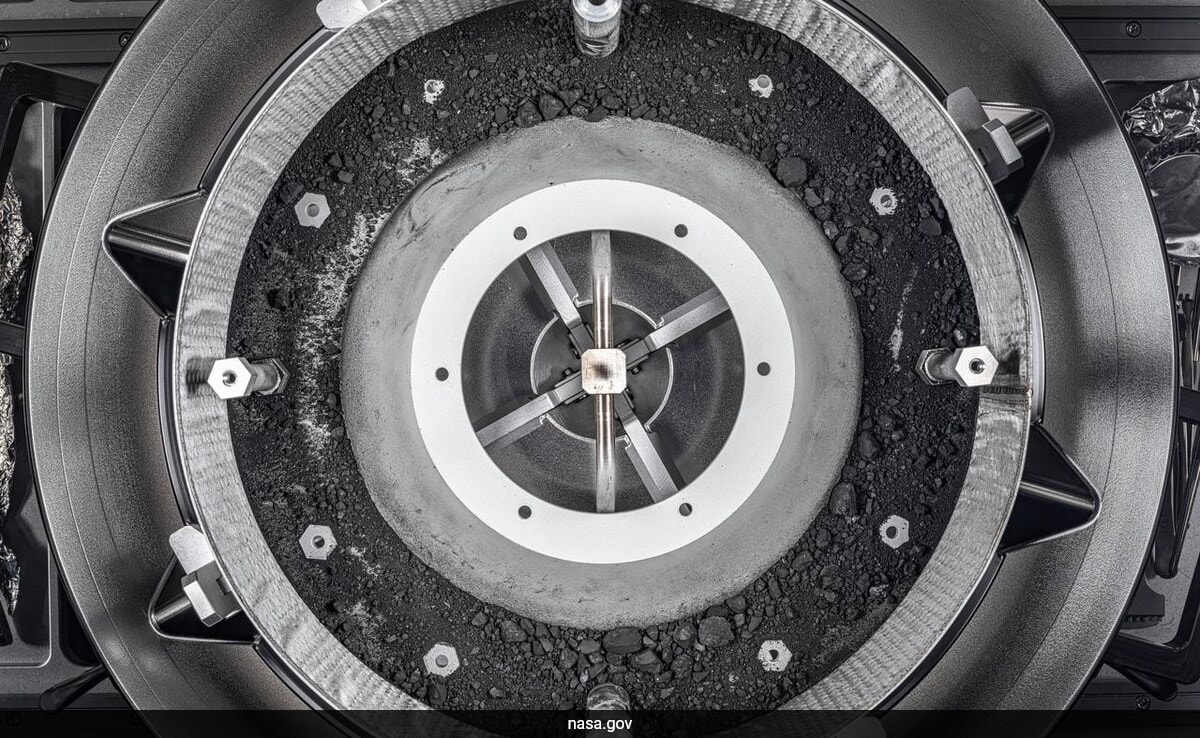
A top-down view of the OSIRIS-REx TAGSAM head with the lid removed.
In a major scientific breakthrough, the National Aeronautics and Space Administration (NASA) has finally unlocked a canister containing precious dust samples from the asteroid Bennu. This accomplishment marks the culmination of four months of dedicated effort by scientists and engineers at Nasa’s Johnson Space Center in Houston, Texas.
The canister, which landed in the Utah desert in September 2023, held samples collected from Bennu’s surface by NASA’s Osiris-Rex spacecraft in 2020. While most of the samples were readily retrieved, additional material remained trapped within the canister’s sampler head, posing a significant challenge.
After months of meticulous work, Nasa’s team successfully removed the two final stubborn fasteners, allowing them to access the remaining dust. The announcement of this achievement was met with excitement within the scientific community, with Nasa’s planetary science division enthusiastically declaring on Twitter, “It’s open! It’s open!”
“It’s open! It’s open! And ready for its closeup. After successfully removing two final fasteners on Jan. 10, members of the Astromaterials team photographed the OSIRISREx asteroid sample with a special technique to achieve super high-res images,” tweeted the space agency.
It’s open! It’s open! And ready for its closeup. After successfully removing two final fasteners on Jan. 10, members of the @astromaterials team photographed the #OSIRISREx asteroid sample with a special technique to achieve super high-res images. https://t.co/bBrfFT3FoRpic.twitter.com/NTGMVFZCP3
— NASA Solar System (@NASASolarSystem) January 19, 2024
According to NASA, these trays will be photographed before the sample is weighed, packaged, and stored at Johnson, home to the most extensive collection of astromaterials in the world. The remaining sample material includes dust and rocks up to about 0.4 inch (one cm) in size. The final mass of the sample will be determined in the coming weeks. The curation team members had already collected 2.48 ounces (70.3 grams) of asteroid material from the sample hardware before the lid was removed, surpassing the agency’s goal of bringing at least 2.12 ounces (60 grams) to Earth.
The curation team will release a catalog of all the Bennu samples later this year, which will allow scientists and institutions around the world to submit requests for research or display.




